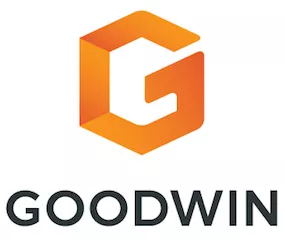- within Transport topic(s)
As part of the implementation of the European Markets in Crypto-Assets Regulation (MiCA), the French Financial Markets Authority (AMF) has announced its compliance with six sets of guidelines adopted by European Supervisory Authorities (ESAs). Five were issued by the European Securities and Markets Authority (ESMA), and the sixth was jointly developed with the European Banking Authority (EBA) and the European Insurance and Occupational Pensions Authority (EIOPA).
These guidelines aim to ensure the consistent and enhanced application of MiCA across the European Union and provide regulatory clarity for crypto-asset service providers and issuers.
1. Qualification of Crypto-Assets as Financial
Instruments
ESMA's guidelines on the conditions and criteria for qualifying
crypto-assets as financial instruments,1 applicable as
of June 3, 2025, clarify how to determine whether a crypto-asset
falls under MiCA or is instead considered a financial instrument
under existing EU financial legislation such as MiFID II, AIFMD,
UCITS directive, or the MMF Regulation. These guidelines are of
particular importance in view of the growing variety of innovative
crypto-assets and the blurred regulatory boundaries between asset
classes (i.e.: financial instruments or crypto-assets falling under
MiCA) for which it is sometimes difficult to make a
distinction.
2. Reverse Solicitation
The guidelines on reverse solicitation,2 applicable as
of May 12, 2025, delineate the stringent conditions under which
third-country firmscan lawfully provide crypto-asset services to EU
clients based solely on the client's initiative. It is
imperative to note that any marketing initiative, encompassing
websites, social media, influencers, or affiliates, may be regarded
as active solicitation and, consequently, necessitate MiCA
authorization. It is important to note that firms cannot rely on an
initial reverse inquiry to market additional services. It is
incumbent upon national competent authorities to enforce this
rigorously in order to prevent regulatory circumvention.
3. Crypto-Asset Transfers
Guidelines on crypto-asset transfers,3 applicable as of
May 12, 2025, address the obligations of crypto-asset service
providers (CASPs) operating on behalf of their clients. These
include requirements around pre-transfer disclosures (such as
involved parties, timelines, fees, and blockchain-specific features
such as the irreversibility of transfers), processing times,
reasons for refusal or delay, and CASP liability.
4. Suitability and Periodic Statement
As of 12 May 2025, guidelines pertaining to the suitability of
individuals and the periodicity of statements4 will be
applicable to CASPs providing advisory services relating to
crypto-assets or the use of crypto-asset services, or crypto-asset
portfolio management. It is imperative that these CASPs
meticulously gather and assess comprehensive client information,
encompassing their experiential background, knowledge, financial
disposition, and overarching objectives. Notwithstanding the
provenance of the information, even if it is derived from
algorithmic evaluations, the CASPs are under an obligation to
undertake regular updates and assessments.
Furthermore, crypto-assets portfolio managers are obliged to submit periodic reports that provide detailed information on performance, fees, and transactions.
5. Maintenance of Systems and Security Access
Protocols
These maintenance of systems and security access protocols
guidelines,5 applicable as of May 27, 2025, apply to
token issuers and applicants of crypto-asset trading admissions
(excluding stablecoins which includes e-money tokens (EMTs) and
asset-referenced tokens (ARTs)). Minimum IT security standards are
established to mitigate risks for entities not covered by the
EU's Digital Operational Resilience Act (DORA). Requirements
include implementation of strict governance, restricted access to
expressly authorized persons, cryptographic keys, and physical
security of critical infrastructure.
6. Templates for Explanations and Opinions and
Standardized Test
These guidelines on templates for explanations and opinions and
standardized test for crypto-assets,6 applicable as of
May 10, 2025, provide standard templates for white paper
disclosures, legal opinions on ARTs, and a classification test to
determine whether a crypto-asset falls under MiCA.
We would like to thank Lauréline Decottignies for her assistance with this insight.
Footnotes
1 Esma guidance on the conditions and criteria for qualifying crypto-assets as financial instruments
2 Esma guidance on reverse solicitation
3 Esma guidance on crypto-asset transfers
4 Esma guidance on suitability and periodic statement
5 Esma guidance on maintenance of systems and security access protocols
6 ESAs guidance on templates for explanations and opinions and standardized test for crypto-assets
The content of this article is intended to provide a general guide to the subject matter. Specialist advice should be sought about your specific circumstances.


